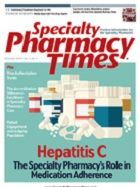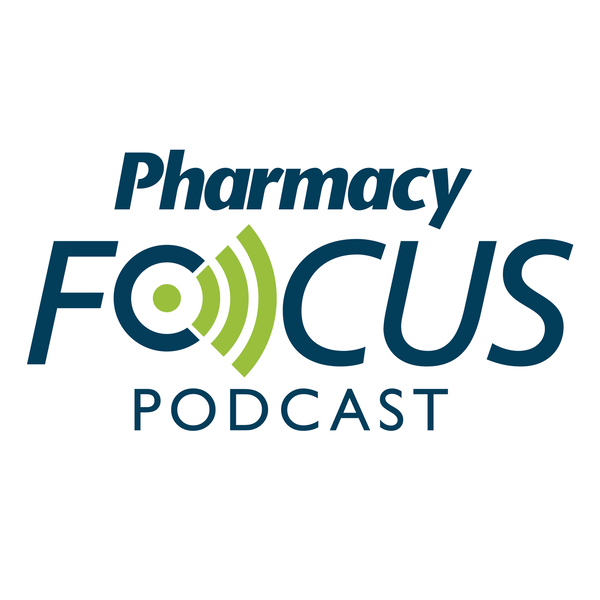Publication
Article
Specialty Pharmacy Times
Generic Drug Labeling Issues: How They Could Affect Biosimilars
Author(s):
Landmark generic labeling rulings may foreshadow the issues that lie ahead when biosimilars enter the US market.
Landmark generic labeling rulings may foreshadow the issues that lie ahead when biosimilars enter the US market.
There has been intense debate over prescription drug labeling, specifically on the subject of what duties generics manufacturers have when it comes to updating labels to reflect an adverse event. Prior US Supreme Court rulings have inadvertently created confusion, as liability depends on whether a consumer was dispensed a brand or generic pharmaceutical. What happens when we take this issue one step further and ask how these labeling regulations would apply to biosimilars? Biosimilars may be utilized in the near future to reduce specialty costs, but none are currently approved in the United States. However, since the FDA does not consider biosimilars to be generic pharmaceuticals and because there is no clear US Supreme Court precedent on the matter, will there be any appropriate legal remedies for consumers in the unfortunate case of an adverse event? This article will examine US Supreme Court precedent on labeling while considering the ways in which current law regarding generics labeling presents a challenge to understanding how biosimilar labeling issues will be adjudicated. This may give specialty pharmacies insight into potential ways to counsel patients once biosimilars receive approval in the United States.
Wyeth v Levine 555 US 555 (2009) was a landmark case that held that a brand manufacturer can be liable under a state’s product liability law when the manufacturer’s label is deemed inadequate. In this case, the product at issue was the anti-nausea drug Phenergan. After a clinician injected the plaintiff with the drug via intravenous (IV) push, the plaintiff developed gangrene and her forearm had to be amputated. The plaintiff brought a state law claim alleging that the drug manufacturer failed to provide an adequate warning about the significant risks of administering Phenergan via IV push. The US Supreme Court held that federal law does not preempt Levine’s claim that Phenergan’s label did not contain an adequate warning about the IV push method of administration.1 Thus, a manufacturer’s compliance with the FDA’s drug labeling process was insufficient to shield it from state liability, especially when there was not clear evidence showing that the FDA would not have approved a labeling change.
The Wyeth decision was quite different from PLIVA v Mensing 131 S. Ct. 2567 (2011). The Mensing ruling held that consumers who experience adverse effects from generic prescriptions will not be able to sue generic manufacturers as long as the drug’s warning label duplicates that of the brand name drug. In Mensing, the plaintiffs took generic versions of Reglan (metoclopramide), the long-term use of which can result in the development of a severe and irreversible neurological disorder. The plaintiffs developed this condition and sued PLIVA and other generic manufacturers under state law, alleging that the manufacturers had a duty to change their warning labels to reflect mounting evidence of the risk related to the long-term use of metoclopramide. The US Supreme Court held that federal law preempts any state law requirements that a generic manufacturer should include warning labels tougher than those approved for use by the equivalent innovator company. As long as the generic label matches the brand’s label, a state could not require the generic company to add additional information to the brand’s label. Thus, whether or not a consumer could obtain relief truly depends on whether the consumer was dispensed a brand name or generic drug.
Now that we understand the landmark labeling rulings, the next question to answer is, “What are biosimilars and how are they different from biologics?” The Patient Protection and Affordable Care Act (ACA) created an abbreviated licensure pathway for biological products that are demonstrated to be “biosimilar” to or “interchangeable” with an FDA-licensed biological product.2 Under the ACA, a biological product may be demonstrated to be “biosimilar” if data show that the product is “highly similar” to an already-approved biological product. Biological products, according to the FDA, include a “wide range of products including vaccines, blood and blood components, allergenics, somatic cells, gene therapy, tissues, and proteins. Unlike most traditional, small-molecule prescription drugs that are made through chemical processes, biological products are generally made from human and/or animal materials.”2 In contrast, biosimilars are “highly similar to a US licensed reference biological product notwithstanding minor differences in clinically inactive components, and for which there are no clinically meaningful differences between the biological product and the reference product in terms of the safety, purity, and potency of the product.”2 The FDA states that biosimilars are not generic versions of biological products, and that the term “generic” applies only to a drug that is bioequivalent to an already-approved small-molecule drug regulated under the Federal Food, Drug, and Cosmetic Act.
Since the theme of cost containment has become more pronounced in developed markets including the United States, it is clear that the role of biosimilars is expected to expand. With government budget constraints, an aging population, and improved treatments that aggressively target chronic diseases, cost containment strategies have been the go-to solution to help ensure patient access. As specialty drug spending continues to increase, biosimilars may be utilized as a lower-cost alternative to biologics. According to IMS Health, there will be an accelerated shift in spending to generics; biologic medicines are expected to account for $200 to $210 billion of global spending, while biosimilars will increase from $693 million in 2011 to between $4 and $6 billion, or 2% of biologics spending, by 2016.3 Needless to say, biosimilars have the potential to rise quickly in the US market.
So how will biosimilar labeling issues be handled with a US Supreme Court precedent that says a consumer’s outcome depends on whether they used a brand name or generic drug? At this writing, there are 2 possible solutions in the making that could fix this remedy gap. The first solution involves Teva Pharmaceuticals USA v Pikerie 217 Cal. App. 4th 96, which may be heard by the US Supreme Court. Pikerie is a twist on Mensing that will address whether a generic manufacturer would be liable for a consumer’s injuries if it did not immediately update its warning label to match the brand name manufacturer’s label.
The second solution involves a contentious proposed FDA rule4 that was developed in the wake of Mensing. If finalized, the rule will require generic manufacturers to independently update their labels when new safety information surfaces about potential risks, while the FDA will then determine whether to encourage other generic and brand manufacturers to update their labels. The rule would also apply to biologics. Proponents will likely argue that this rule is needed to incentivize generic manufacturers to ensure that labeling updates are timely and accurate, while simultaneously allowing consumers to pursue “failure to warn” claims against generic manufacturers. Opponents will point to enforcement problems that may occur in situations involving multiple generic manufacturers that propose their own labeling updates, or may argue that allowing the FDA to temporarily allow labeling differences between brand and generic products until final FDA adjudication violates the Hatch—Waxman Act, which mandates symbiotic brand and generic labeling. Perhaps the outcome of either of these 2 developments will provide more clarity on this unsettled policy issue.
The marketplace of innovation tends to operate much faster than the rule of law, hence our quandary regarding the inevitability of biosimilars entering the US market and the unsettled law that governs it. I do understand that several hurdles remain for biosimilars, such as an industrywide policy on biosimilarity, naming, and interchangeability. However, assuming these questions are answered, will Mensing afford a consumer an appropriate legal remedy if no other policies are developed and an adverse event occurs with a biosimilar? This is a question that both brand and generic manufacturers should take into account when evaluating risk as well as potential future litigation strategies. The eventual answers will undoubtedly impact the specialty marketplace. SPT
References
- Wyeth v Levine, 555 US 555 (2009). www.supremecourt.gov/opinions/08pdf/06-1249.pdf.
- FDA information for consumers (biosimilars). FDA website. www.fda.gov/Drugs/DevelopmentApprovalProcess/ HowDrugsareDevelopedandApproved/ApprovalApplications/ TherapeuticBiologicApplications/Biosimilars/ucm241718.htm
- The Global Use of Medicines: Outlook Through 2016. Parsippany, NJ: IMS Institute for Healthcare Informatics; 2012. www.imshealth.com/deployedfiles/ims/Global/Content/Insights/ IMS%20Institute%20for%20Healthcare%20Informatics/Global%20Use%20of%20Meds%202011/Medicines_Outlook_Through_2016_Report.pdf.
- Supplemental applications proposing labeling changes for approved drugs and biological products [proposed rule]. Federal Register. November 13, 2013. www.federalregister.gov/articles/2013/11/13/2013-26799/supplemental-applications-proposing-labeling-changes-for-approved-drugs-and-biological-products.
About the Author
Ron Lanton III, Esq, is president of True North Political Solutions, LLC. He has over 20 combined years of government affairs and legal experience. This includes activities on the municipal, state, and federal levels of government. Most recently he worked for a pharmaceutical wholesaler, where he created and oversaw the company’s government affairs department, served as their exclusive lobbyist, and also advocated for the company’s various health care customers. Prior to that, Ron worked at a government affairs consulting firm in Arlington, Virginia, where he focused on health care, energy, commerce, and transportation issues. He has also clerked for a federal magistrate, was appointed as a municipal commissioner on environmental issues, and has served as consultant to Wall Street firms on financial issues. He has been a featured industry speaker on issues such as pharmaceutical safety and health care cost containment.Ron earned a Juris Doctor from The Ohio State University Moritz College of Law and a Bachelor of Arts from Miami University of Ohio. He is also a “40 under 40” award recipient. He has been admitted to practice law in New York, Illinois, and the District of Columbia.







